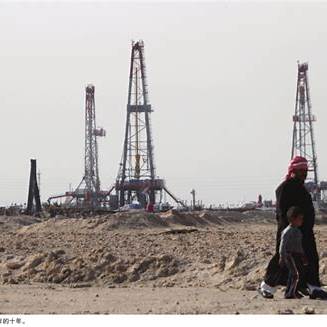📜 Deals Signed in Desert Heat
As the 20th century unfolded and massive oil reserves revealed themselves beneath the Middle East, a scramble began—not of armies, but of contracts.
While kings and sheikhs ruled the land above, it was foreign oil companies—armed with legal teams, diplomats, and deep pockets—that would come to dominate the riches below. This era saw the rapid formation of Western-dominated oil concessions, shaping the economic and political destiny of the region for generations.
The blueprint was simple: offer financial incentives and promises of development in exchange for exclusive rights to explore, extract, and export petroleum. But the fine print, often buried beneath layers of legalese, almost always favored the foreign corporations.

🤝 The Red Line Agreement: Carving Up the Region
One of the most defining arrangements was the Red Line Agreement of 1928. Born in the smoky drawing rooms of Paris, it was a pact among the world’s most powerful oil companies—British, American, French, and Dutch interests—to divide control of Middle Eastern oil production like pieces on a chessboard.
The agreement outlined a vast region (traced with a literal red line on a map) where the parties agreed not to compete with each other for oil—essentially locking up an entire region for coordinated extraction. It included territories in the former Ottoman Empire, spanning Iraq, Syria, Turkey, and the Arabian Peninsula.
The result? A web of joint ventures where Middle Eastern governments held little to no control, while Western firms dominated every stage—from exploration to export.
🛢️ Sign Here, Sovereignty Later
In Iran, the Anglo-Persian Oil Company (soon to become BP) held a sweeping concession that gave it control over oil fields, refineries, and exports. In Iraq, the Iraq Petroleum Company (IPC) controlled all major reserves under British-led influence. In Saudi Arabia, ARAMCO operated under American control for decades before Saudis gained partial access.
These agreements often provided meager royalties to local rulers and virtually no transparency in accounting. While oil gushed from the earth and profits soared in London, Paris, and New York, many in the region were left with crumbling infrastructure, limited education, and minimal political agency.
Western dominance wasn’t just in barrels—it was in balance sheets.
💼 The Illusion of Partnership
To the outside world, these deals were marketed as partnerships—Western technology meeting Middle Eastern resources. But on the ground, it was a different story. Engineers and managers were largely foreign. Decision-making rested in boardrooms abroad. Local labor was underpaid and often excluded from meaningful roles.
This growing imbalance planted the seeds of discontent. Beneath the surface of economic “modernization” was a slow boil of frustration—one that would erupt in the decades to come as the region sought to reclaim control of its oil.
⚠️ The Cost of Control
By the 1940s, as World War II approached and oil demand soared once more, the importance of Middle Eastern reserves became undeniable. Yet the system built on Western-dominated oil concessions was unstable. It produced profit—but not equity. It offered modernization—but not sovereignty.
The Middle East had become the gas station of the Western world—but it wasn’t holding the keys.
